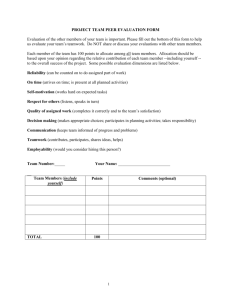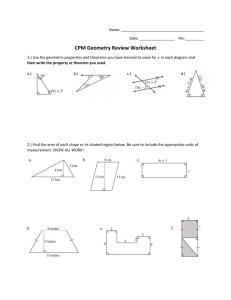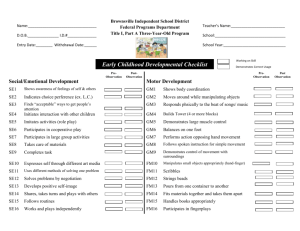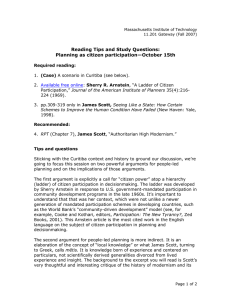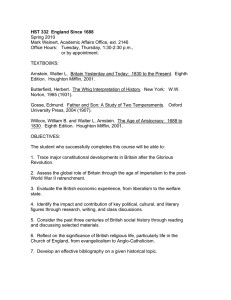Different kinds of political participation
advertisement
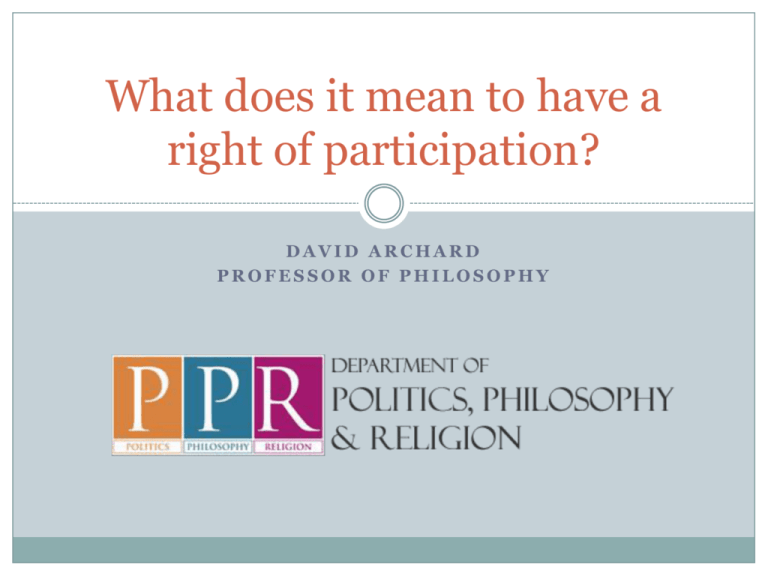
What does it mean to have a right of participation? DAVID ARCHARD PROFESSOR OF PHILOSOPHY Different kinds of political participation (1) The parents vote and the children’s interests count (2) The child is a future voter (3) Children play at voting (4) Children’s parliaments A right to participate UNCRC Article 12 1. States Parties shall assure to the child who is capable of forming his or her own views the right to express those views freely in all matters affecting the child, the views of the child being given due weight in accordance with the age and maturity of the child. 2. For this purpose, the child shall in particular be provided the opportunity to be heard in any judicial and administrative proceedings affecting the child, either directly, or through a representative or an appropriate body, in a manner consistent with the procedural rules of national law. Will say something about participation and something about what it means to have a right Participation Participation is literally taking part or playing one’s part – in a process (or a practice) which leads to an outcome. To be a participant is to be someone who contributes in some way and to some extent to an outcome/result One participates with others Alone I decide what book I am going to read next; In a book club I participate in the collective choice of our next book to read Two important questions about participation: (1) SCOPE: What is being decided? Children participate in decision-making processes about their own interests and lives By contrast adults do not participate in decision-making about what affects them alone Consider a divorce and custody dispute: We would not ask adult parties to ‘participate’ in a discussion about whether or not to stay married; whereas, We would ask a child which parent she wants to live with Two important questions about participation: (1) SCOPE: How are we deciding? This is the question of how far the process in which people participate is itself open to collective determination. Thus individual citizens do play a role in setting the terms under which they are citizens; Whereas children are participants in process they did not choose Two important questions about participation: (2) Degree of participation How does one contribute? What part if any does one play in determining an outcome? ‘Ladder of participation’ Relevant is the influential ‘ladder’ of participation devised originally by Sherry Arnstein which runs from manipulation up to citizen control. Arnstein’s is an eight step or rung ladder but obviously it can be made more or less sophisticated. Basic distinction between: merely being heard/consulted and playing a part (co-determinant) So the obvious worry that children will be heard but not be co-agents Key questions What exactly does it means to say that a child participates? How does it participate? What matters does a child play a part in deciding? Does a child co-determine how it participates and what matters it co-determines? What is a right? In simple terms: whatever protects an interest of sufficient importance that it makes sense to put others under a duty My right to life protects something of sufficient importance (my life!) that it makes sense to hold that everyone else has a duty not to kill me That duty can be enforced (e.g. criminal punishment of [attempted] murderers) The right to speak A child’s right to speak (participate) is not a Right authoritatively to determine an outcome But it is more than a right simply to be heard It is a right that recognises the child as an independent source of views and interests Having and exercising rights It is one thing to possess a right; and It is another thing to exercise that right So there are duties to ensure that a child has the right to participate (e.g. statutory provision; law); and Duties to ensure that a child can exercise that right: Education; institutions Participation and best interests UNCRC Article 3 1. In all actions concerning children, whether undertaken by public or private social welfare institutions, courts of law, administrative authorities or legislative bodies, the best interests of the child shall be a primary consideration. How do we balance a right to participate (=codetermine an outcome) against the best interests of a child? Child and medical treatment A medical judgment as to what is best for the child Parental agreement A child does not wish to have the procedure Grant that provision of information is important; as is The child’s assent What role does a child’s right to express a view play? Balancing act: different possibilities Best interests (always) take precedence over a child’s views A child’s participation is a way to find out what is in her best interests A child’s views is an element of her best interests The best interests of the child influence the weight we give to the views of the child: the poorer the views the less weight they are given Key questions What does it mean to speak of a right to participation? Is it a right simply to be heard or to co-determine (to some degree) some outcomes? How do we weigh the right to participate – however that is understood – against the child’s best interests? Summary: a right to participate? To understand exactly what such a right involves, we need to be much clearer about What exactly it means to participate What exactly it means to say that one has a right to participate And what exactly it means to say that one has a right to participate and has best interests that should be promoted




